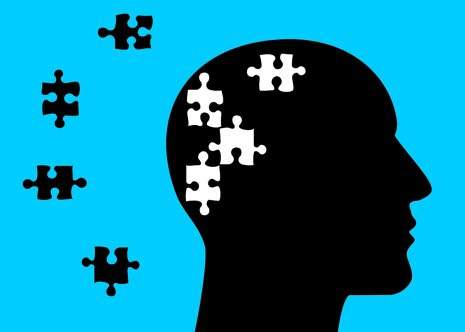Nature Knows and Psionic Success
God provides
Dr. Corinne: Do You Feel Like Happiness is Elusive? Take This Challenge for a More Positive Outlook That Can Spark Better Health

Don’t worry….Be Happy!! Who wants to experience a Happiness Challenge! Are you ready? Fear. Fear can undoubtedly get in the way of happiness. Fear of the unknown, of failure, or what people think about us are common barriers to happiness. In fact, fear can be downright crippling! Fear of change, in particular, can cause people to stay in a soul-sucking career or stick with an unhappy relationship. The unknown is scary, but what if happiness is on the other side of your fear? Today’s challenge is to identify the lines of your comfort zone and take one tiny step out of it. Think of something you fear and challenge yourself to face it. Give it your best shot. You can do this! Having healthy and positive self-esteem is crucial to many aspects of life, including happiness. Self-esteem isn’t constant. It comes and goes like the ebb and flow of the tide. It’s normal to internalize negative feelings, but it’s important to catch them before they lead you down the path of feeling unworthy. The antidote to poor self-esteem? Is self-compassion. Jesus Christ is the greatest example of someone with true compassion. Not only did Jesus have compassion and heal people from physical suffering, he also showed the greatest compassion for mankind when He died on the cross for our sins. Psalm 145:9, "The Lord is good to all; He has compassion on all He has made." Show some compassion to yourself today. Sometimes loving our self is hard just like forgiving our self. Trust in this process to help you feel happiness again. We all love external rewards, however, when our happiness is dependent upon them, we’re constantly chasing the next one. Happiness is an inside job. The best things in life are created and cultivated—good, solid relationships especially […]
5 Reasons Why Good Sleep is So Important
You already know that you’re supposed to get at least eight hours of sleep every night, but have you ever considered the quality of that time? You can stay in bed for 12 hours and still wake up feeling exhausted if you have poor sleep quality. Good sleep is about much more than just how long you spend in bed. Your sleep quality refers to the number of awakenings you experience each night, sleep disturbances and how smooth your sleep cycle is. Many people suffer from sleep disorders including insomnia, sleep apnea, restless leg syndrome and periodic limb movement disorder. In order to improve your sleep quality, it’s important to identify any sleep disturbances you have through sites like SleepKid and work with a doctor to treat them as soon as possible. Improving your sleep quality can work wonders on your entire life, and these five benefits are just the beginning. 1. Improve Memory Good sleep is imperative to good cognitive functioning. That’s a fancy way of saying you’ll think clearer and understand things better if you sleep well. During sleep, your brain interprets the events of the day and turns them into memories through a process known as consolidation . You’ll have an easier time remembering things in better detail after a good rest. 2. Easier Weight Loss Research shows that sleep is linked to obesity . The underlying science links sleep to hormones that regulate your appetite, including leptin and ghrelin. Poor sleep can lead to the imbalance or underproduction of these hormones, so you eat more than you have to and genuinely may not even feel full. Sleep also has a strong effect on your metabolism, the process through which your body breaks down food and turns it into energy. 3. Reduce Stress Sleep and stress […]
Dementia not only due to ageing, says WHO

Contrary to general belief, dementia is not an inevitable (or natural) consequence of ageing which, though, is the strongest risk factor, a recent World Health Organisation (WHO) report has said. It maintained that young onset dementia (defined as the onset of symptoms before the age of 65 years) accounts for up to 9 per cent of the total cases. In fact, lifestyle risk factors, such as physical inactivity, excessive alcohol use, certain medical conditions like high blood pressure, high cholesterol and diabetes and smoking too are associated with a high risk of developing dementia. Additional risk factors include depression, low educational attainment, social isolation, and cognitive inactivity, as per the report as per the WHO which has warned that the number of people with dementia is expected to triple in the next 30 years from around current 50 million. These should be kept at the bay to prevent dementia, said the WHO as it recently issued health guidelines to tackle the mental health related debilitating progressive disease. Dementia is a category of brain disease which can cause long-term memory loss and even gradual decrease in the ability to think. Dementia is not a specific disease, but a group of disorders associated with a decline in memory or other thinking skills. The decline is so severe it reduces a person’s ability to perform simple daily activities and affects memory, comprehension, orientation and judgment among other cognitive functions. The most common type of dementia is Alzheimer’s disease. Yet another studies show that in absolute terms, there are about 35.6 million people living in the world currently with dementia and 7.7 million new cases of dementia added every year, i.e., nearly one case every 4 s with highest projections in South Asian nations such as India and China. WHO Director-General Dr Tedros […]
Helping robots remember: Hyperdimensional computing theory could change the way AI works

fallin robots The Houston Astros’ José Altuve steps up to the plate on a 3-2 count, studies the pitcher and the situation, gets the go-ahead from third base, tracks the ball’s release, swings … and gets a single up the middle. Just another trip to the plate for the three-time American League batting champion. Could a robot get a hit in the same situation? Not likely. Altuve has honed natural reflexes, years of experience, knowledge of the pitcher’s tendencies, and an understanding of the trajectories of various pitches. What he sees, hears, and feels seamlessly combines with his brain and muscle memory to time the swing that produces the hit. The robot, on the other hand, needs to use a linkage system to slowly coordinate data from its sensors with its motor capabilities. And it can’t remember a thing. Strike three! But there may be hope for the robot. A paper by University of Maryland researchers just published in the journal Science Robotics introduces a new way of combining perception and motor commands using the so-called hyperdimensional computing theory, which could fundamentally alter and improve the basic artificial intelligence (AI) task of sensorimotor representation — how agents like robots translate what they sense into what they do. “ Learning Sensorimotor Control with Neuromorphic Sensors: Toward Hyperdimensional Active Perception ” was written by computer science Ph.D. students Anton Mitrokhin and Peter Sutor, Jr.; Cornelia Fermüller, an associate research scientist with the University of Maryland Institute for Advanced Computer Studies; and Computer Science Professor Yiannis Aloimonos. Mitrokhin and Sutor are advised by Aloimonos. Integration is the most important challenge facing the robotics field. A robot’s sensors and the actuators that move it are separate systems, linked together by a central learning mechanism that infers a needed action given sensor data, or […]
School breakfast program expands across U.S.

Amazon (NASDAQ: AMZN) announced that its school breakfast program is projected to provide access to more than 9 million breakfasts for over 50,000 students by the end of this year. The program, a collaboration with Share Our Strength’s No Kid Hungry campaign, enables schools to incorporate nutritious breakfasts into the regular school day and helps to remove hunger as a barrier to learning for students in need of a healthy morning meal. Amazon’s funding supports technology, education, advocacy and implementation in over 450 schools in local communities across the U.S. where it operates. One in six children in the U.S. face hunger, and studies show breakfast is a critical meal to ensure nutrition and to fuel the brain for the school day. However, according to a 2019 research report compiled by the Food Research and Action Center (FRAC), just over half of the kids who qualify for free breakfast are actually getting it. Students who eat breakfast have higher test scores in math, perform better on standardized tests, and have improved behavior in the class. In contrast, students who skip breakfast and experience hunger generally have slower memory recall, make more errors, and are more likely to be absent, tardy or to repeat a grade. “Kids can’t learn when they are hungry. I know that breakfast is vital to our student’s ability to focus,” said Pamela Pansa, Local Food Nutrition Service Director at Crete-Monee School District 201-U in Illinois. “Amazon’s support enables us to strengthen our breakfast program and ensure each student has access to the food they need to learn and thrive.” “With Amazon’s commitment to fighting child hunger, No Kid Hungry has been able to accelerate its impact by investing in entire school districts to reach more under-resourced students at scale,” said Billy Shore, Executive Chairman of […]
“How a 20 minute workout gave me the career boost I needed”

Writer Moya Lothian-McLean was on a quest to build up her biceps, but she gained much more than physical strength. Here’s she explains how her career was boosted by fitness as part of the new Stylist Strong campaign. Before I sat down to write this, I did a workout. Nothing fancy; just a 25 minute cardio circuit . By the end I was tomato-faced and dripping sweat onto the battered fitness mat I drag into the middle of my bedroom floor at least four times a week. The day prior, I’d given myself 24 hours grace from both the workout and the writing I had tabled to complete by the time Monday rolled around. Waking up on Sunday, I didn’t particularly feel like doing either. But this was the deal I’d struck with myself. So instead of rolling over and continuing to doze, I got out of bed, pulled on my kit and fired up my workout app. 25 minutes later I was awake, focused and ready to tick the next task off my to-do list. Exercise… on a Sunday? Doing work… on a Sunday? Getting up before 12pm… on a Sunday? If it helps, I’m equally as horrified at how insufferable I’ve become since I started exercising in earnest three years ago. To someone who knew me in 2016, the idea that I could possess a work ethic built on consistency, routine and actually getting shit done, rather than just talking about it, would be shocking. The suggestion alone that I even have a work ethic would cause them to double take. Up until the age of 21, my approach to work, whatever its nature – paid, academic, basic life admin like registering for the GP so I wouldn’t, you know, die of a cold – was ‘procrastinate […]
Dairy Dialog podcast 32: Advanced Lipids, Prinova and Glanbia

The event attracts companies and visitors from all around the world, and DairyReporter spoke with several companies, three of which are featured this week, the remainder will be included in full articles on the event. Advanced Lipids launches INFAT PLUS DairyReporter spoke with CEO of Advanced Lipids, Dr Marcus Gliwitski, about INFAT PLUS. New research conducted by Advanced Lipids, a joint venture between AAK and Frutarom, has shown there are differences in the structure of mother’s milk when comparing breast milk from women from different countries. On the back of this research, the company created INFATPLUS, a fat ingredient specially designed to be closer to the structure of mother’s milk in China. Mother’s milk offers optimal nutrition for infants, and the fat it contains provides around half the energy they require for healthy growth. Nearly all of this fat is in the form of triglycerides (TG). The most abundant TG species in mother’s milk are palmitic and oleic acids, mainly in the structure Oleic-Palmitic-Oleic (OPO) or Oleic-Palmitic-Linoleic (OPL). China accounts for almost half of all formula sales globally and research conducted by Advanced Lipids showed Chinese parents’ value infant formula of high quality and with high nutritional value. Gliwitzki said, “Mother’s milk offers optimal nutrition for infants and we already provide a product that contains many of its benefits. Now we’re offering an advanced fat ingredient that is even closer to mother’s milk in China.” The company said INFAT is scientifically proven to provide a range of health benefits for infants, including less crying and more sleep. Other benefits include better fat and calcium absorption and softer stools. Prinova showcase Prinova is one of the world’s largest distributors of functional ingredients and a provider of integrated solutions such as nutrient premixes and particle management services. The company has […]
Amazon Providing Access to Over 9 Million School Breakfasts for More Than 50,000 Students in 450 Schools Across the U.S.
SEATTLE–(BUSINESS WIRE)– In collaboration with Share Our Strength’s No Kid Hungry campaign, Amazon’s support is helping provide a healthy start to the day so kids are ready to learn in class Students who eat breakfast have higher test scores in math, perform better on standardized tests, and have improved behavior in the class Amazon ( AMZN ) today announced that its school breakfast program is projected to provide access to more than 9 million breakfasts for over 50,000 students by the end of this year. The program, a collaboration with Share Our Strength’s No Kid Hungry campaign, enables schools to incorporate nutritious breakfasts into the regular school day and helps to remove hunger as a barrier to learning for students in need of a healthy morning meal. Amazon’s funding supports technology, education, advocacy and implementation in over 450 schools in local communities across the U.S. where it operates. One in six children in the U.S. face hunger, and studies show breakfast is a critical meal to ensure nutrition and to fuel the brain for the school day. However, according to a 2019 research report compiled by the Food Research and Action Center (FRAC), just over half of the kids who qualify for free breakfast are actually getting it. Students who eat breakfast have higher test scores in math, perform better on standardized tests, and have improved behavior in the class. In contrast, students who skip breakfast and experience hunger generally have slower memory recall, make more errors, and are more likely to be absent, tardy or to repeat a grade. “Kids can’t learn when they are hungry. I know that breakfast is vital to our student’s ability to focus,” said Pamela Pansa, Local Food Nutrition Service Director at Crete-Monee School District 201-U in Illinois. “Amazon’s support enables us to […]
Why traditional learning methodologies fall short in policing, and how a simulator can help

Sponsored by VirTra There are many challenges involved in the training of police officers, but one of the biggest is the sheer unpredictability of the situations they will face. Unlike most jobs, the situational and environmental variables of police work are countless, information is often limited or outright wrong, and officers are dealing with human beings under stress. All of these factors contribute greatly to the uncertainty that officers must learn to work through if they’re going to be successful, whether handling a panicked parent or confronting a robbery suspect. Simulator training provides an immersive, real-time experience that complements live-fire training to enhance an officer’s skill set, improve marksmanship, test decision-making and build confidence. (image/VirTra) Traditional learning methodology, especially classroom lecture, is incapable of properly preparing officers to handle field situations because it cannot duplicate or effectively convey the experience of working through a rapidly unfolding and stressful situation. A more viable approach is to immerse the student in scenario-based situations that mirror what they will face on the street. Academy trainers realized this long ago and began using role-play exercises – a big step forward, but limited in effectiveness for a variety of reasons, including logistics, lack of qualified role players and limited debrief capability. A better approach is to use scenario-based simulator training. Recent technological advances make it possible to conduct very effective training that provides realistic exposure and experience while also allowing for meaningful and constructive follow-up. This approach to training improves field capabilities because trainees actually learn how to work through situations, establishing thought processes and muscle memory that can improve their performance in the field. Considerations for Establishing a Simulation Program It’s important to stress that simulator training is not a substitute for live-fire training on a range. However, it’s very complementary to range […]
The coming dementia: We better ‘tek sleep mark death’

In a new and alarming report, the United Nation’s World Health Organisation (WHO) has warned that the number of people living with dementia is expected to explode from approximately 50 million today to 152 million by 2050. During that same period, the number of Jamaicans over 60 years of age – the fastest growing segment of the population – is projected to double, according to the Green Paper for the National Policy for Senior Citizens (2018). Dementia is caused by a variety of brain illnesses that affect memory, thinking, behaviour and the ability to perform everyday activities. Around five to eight per cent of the world’s people over the age of 60 are afflicted with Alzheimer’s disease and other forms of dementia, WHO said. Not unusually, young people frequently pay little to no attention to what will happen to them in old age, and so make little to no provisions for the time when their health and productive years may disappear. It might be useful to remind those in the full bloom of youth of the anonymous quote: “He spent his health to gain his wealth; he spent his wealth to regain his health.” The pain of dementia cannot be exaggerated. Those who have watched previously robust and highly productive parents dwindle before their very eyes, to the point of complete non-recognition of members of their families, know too well this trauma. Besides the emotional toll, the disease inflicts a heavy economic burden on societies as a whole, with the cost of caring for people with dementia expected to rise from an estimated US$818 billion in 2015 to US$2 trillion by 2030, the WHO report said. Where Jamaica is concerned, the writing is already on the wall. In 2015, the population of people 60 years and older was 341,200 […]
‘No more tears of separation or disappointment’

In his 60 years in Guernsey, Dick Taylor has witnessed many transformations within the island’s education system and is convinced the latest reforms are both necessary and based on sound scientific principles. The former deputy Education director explains why he welcomes the changes Shutterstock picture THIS is a great year for all you parents out there; it’s the last year any of you will receive that envelope. No, not the one containing your income tax arrears – they only stop with the arrival of the undertaker. But that envelope informing you which school your 11-year-old child will be attending from September. From now on they all know years ahead where they will be going, together with all their school mates, and remain with them until they reach the school leaving age. No more are friends to be separated, although new ones will join them as they become the new intake at the high schools. No more tears of separation or disappointment. I’m sure, like we who have sensed that anxious knot in the stomach as that envelope hits the door mat and our child’s slight tremble of the hand as they slit open the missive that would determine their future few years and possibly, for some, their future life, it will not be missed. Nor will the querulous parental question uttered through clenched teeth and rictus smile, ‘well, is it College, Grammar … or High School (in English law prevailing at the time and in Guernsey by committee resolution known as secondary modern)?’ For my family the situation was compounded by the fact that being the parents of identical twins they might have been selected for different schools, which in the event was resolved in a bitter-sweet fashion, for in playground language ‘they both failed’. At the heart of […]
New drug trial in Auckland could make life easier for autistic children

NEW ZEALAND New drug trial in Auckland could make life easier for autistic children Bridget and Jack Carter say a new drug being trialled for children with autism could make a huge difference to people like their sons Cameron, left, and Nathan. Photo / Supplied Two new drugs being trialled in Auckland could help autistic youngsters focus better at school, interact with others more comfortably and hold down a job, researchers are hoping. The new medications, which work by altering the bacteria in a person’s gut, are being trialled in Auckland, Sydney and Brisbane. Dr Stewart Campbell, senior vice president of preclinical research and development at Axial Biotherapeutics, said studies had found children with autism produced high levels of particular metabolites which were much lower or not present at all in the gut of other children. Studies showed those substances caused mice to behave in the same way as mice bred with an autistic profile, he said. Campbell said the two medications, a carbon-based drug and a probiotic, aimed to either mop up the harmful metabolites like a sponge or change the behaviour of other gut bacteria so they produced less of the substance. "If those [substances] are exacerbating the problem, what if we took them out of the gut and prevented them from getting to the brain and wreaking havoc," he said. "We think there’s an underlying anxiety component that seems to be operating in a lot of kids with autism. When anybody gets anxious it manifests in all types of behaviours. In autistic kids it seems to come out in classic autism behaviours of repetitive motion and social withdrawal and things like that. "So we think that if we can just damp down the anxiety level maybe it would have a downstream impact where some of these […]
Amazon To Provide Access To Breakfast For More Than 50,000 Students in U.S.

Amazon (NASDAQ: AMZN) today announced that its school breakfast program is projected to provide access to more than 9 million breakfasts for over 50,000 students by the end of this year. The program, a collaboration with Share Our Strength’s No Kid Hungry campaign, enables schools to incorporate nutritious breakfasts into the regular school day and helps to remove hunger as a barrier to learning for students in need of a healthy morning meal. Amazon’s funding supports technology, education, advocacy and implementation in over 450 schools in local communities across the U.S. where it operates. amazon logo resized One in six children in the U.S. face hunger, and studies show breakfast is a critical meal to ensure nutrition and to fuel the brain for the school day. However, according to a 2019 research report compiled by the Food Research and Action Center (FRAC), just over half of the kids who qualify for free breakfast are actually getting it. Students who eat breakfast have higher test scores in math, perform better on standardized tests, and have improved behavior in the class. In contrast, students who skip breakfast and experience hunger generally have slower memory recall, make more errors, and are more likely to be absent, tardy or to repeat a grade. “Kids can’t learn when they are hungry. I know that breakfast is vital to our student’s ability to focus,” said Pamela Pansa, Local Food Nutrition Service Director at Crete-Monee School District 201-U in Illinois. “Amazon’s support enables us to strengthen our breakfast program and ensure each student has access to the food they need to learn and thrive.” “With Amazon’s commitment to fighting child hunger, No Kid Hungry has been able to accelerate its impact by investing in entire school districts to reach more under-resourced students at scale,” said Billy […]
The coming dementia: We better ‘tek sleep mark death’

In a new and alarming report, the United Nation’s World Health Organisation (WHO) has warned that the number of people living with dementia is expected to explode from approximately 50 million today to 152 million by 2050. During that same period, the number of Jamaicans over 60 years of age – the fastest growing segment of the population – is projected to double, according to the Green Paper for the National Policy for Senior Citizens (2018). Dementia is caused by a variety of brain illnesses that affect memory, thinking, behaviour and the ability to perform everyday activities. Around five to eight per cent of the world’s people over the age of 60 are afflicted with Alzheimer’s disease and other forms of dementia, WHO said. Not unusually, young people frequently pay little to no attention to what will happen to them in old age, and so make little to no provisions for the time when their health and productive years may disappear. It might be useful to remind those in the full bloom of youth of the anonymous quote: “He spent his health to gain his wealth; he spent his wealth to regain his health.” The pain of dementia cannot be exaggerated. Those who have watched previously robust and highly productive parents dwindle before their very eyes, to the point of complete non-recognition of members of their families, know too well this trauma. Besides the emotional toll, the disease inflicts a heavy economic burden on societies as a whole, with the cost of caring for people with dementia expected to rise from an estimated US$818 billion in 2015 to US$2 trillion by 2030, the WHO report said. Where Jamaica is concerned, the writing is already on the wall. In 2015, the population of people 60 years and older was 341,200 […]
Books To Improve Your Health This Summer

Reading is a great way to ensure your longevity. In fact, not only is reading informative but reading books in general has been linked to a number of health benefits. Books can improve your health by exercising your memory, and keep your brain younger for longer. Reading also improves your empathetic skills and reduces your stress levels. Must-Have Summer Books List If you’re looking to live better, smarter and much, much longer, be sure to bury your head in one of these awesome books. Have you ever struggled to get out of bed? Not from your body feeling tired but simply because you’re being weighed down by your own thoughts? If the answer is yes, then this book from Gary John Bishop is exactly what you need to lighten the load of those heavy thoughts. One way in which he does this is by encouraging you to act and if you choose not to, then you need to face the fact that you’re not willing. The wrong thoughts can be extremely detrimental to your general well-being. Yet, Bishop’s book offers a no-nonsense approach on how you can control those negative thoughts. So, this summer, if you need a good pick-me up and some headstrong advice on you can literally get out of your own head and back into your life, then this is the book for you. Looking to engage in a healthy sex life this summer? Then this is a book that both you and your partner will enjoy. Sex is normal, yet we often steer away from discussing the different degrees of sexual relationships. Be it our wants, desires and even garnering a better understanding of how our bodies function sexually. Thankfully, unlike other sex-advice books, Nagasaki’s book offers an insightful, fascinating and incredibly useful guide for […]
Amazon Providing Access to Over 9Million School Breakfasts for More Than 50,000 Students in 450 Schools Across the U.S.

Amazon AMZN, +1.76% today announced that its school breakfast program is projected to provide access to more than 9 million breakfasts for over 50,000 students by the end of this year. The program, a collaboration with Share Our Strength’s No Kid Hungry campaign, enables schools to incorporate nutritious breakfasts into the regular school day and helps to remove hunger as a barrier to learning for students in need of a healthy morning meal. Amazon’s funding supports technology, education, advocacy and implementation in over 450 schools in local communities across the U.S. where it operates. One in six children in the U.S. face hunger, and studies show breakfast is a critical meal to ensure nutrition and to fuel the brain for the school day. However, according to a 2019 research report compiled by the Food Research and Action Center (FRAC), just over half of the kids who qualify for free breakfast are actually getting it. Students who eat breakfast have higher test scores in math, perform better on standardized tests, and have improved behavior in the class. In contrast, students who skip breakfast and experience hunger generally have slower memory recall, make more errors, and are more likely to be absent, tardy or to repeat a grade. “Kids can’t learn when they are hungry. I know that breakfast is vital to our student’s ability to focus,” said Pamela Pansa, Local Food Nutrition Service Director at Crete-Monee School District 201-U in Illinois. “Amazon’s support enables us to strengthen our breakfast program and ensure each student has access to the food they need to learn and thrive.” “With Amazon’s commitment to fighting child hunger, No Kid Hungry has been able to accelerate its impact by investing in entire school districts to reach more under-resourced students at scale,” said Billy Shore, Executive Chairman […]
Amazon com : Providing Access to Over 9 Million School Breakfasts for More Than 50,000 Students in 450 Schools Across the U.S.

In collaboration with Share Our Strength’s No Kid Hungry campaign, Amazon’s support is helping provide a healthy start to the day so kids are ready to learn in class Students who eat breakfast have higher test scores in math, perform better on standardized tests, and have improved behavior in the class Amazon (NASDAQ: AMZN) today announced that its school breakfast program is projected to provide access to more than 9 million breakfasts for over 50,000 students by the end of this year. The program, a collaboration with Share Our Strength’s No Kid Hungry campaign, enables schools to incorporate nutritious breakfasts into the regular school day and helps to remove hunger as a barrier to learning for students in need of a healthy morning meal. Amazon’s funding supports technology, education, advocacy and implementation in over 450 schools in local communities across the U.S. where it operates. One in six children in the U.S. face hunger, and studies show breakfast is a critical meal to ensure nutrition and to fuel the brain for the school day. However, according to a 2019 research report compiled by the Food Research and Action Center (FRAC), just over half of the kids who qualify for free breakfast are actually getting it. Students who eat breakfast have higher test scores in math, perform better on standardized tests, and have improved behavior in the class. In contrast, students who skip breakfast and experience hunger generally have slower memory recall, make more errors, and are more likely to be absent, tardy or to repeat a grade. “Kids can’t learn when they are hungry. I know that breakfast is vital to our student’s ability to focus,” said Pamela Pansa, Local Food Nutrition Service Director at Crete-Monee School District 201-U in Illinois. “Amazon’s support enables us to strengthen our breakfast […]
Scientists explore a compound in chestnut flower for its anti-obesity properties

( Natural News ) Cinnamyl alcohol, an organic compound found in Japanese chestnut ( Castanea crenata ) flowers, can potentially be used in treating – and even preventing – obesity, according to a study in The American Journal of Chinese Medicine . In their report, researchers from South Korea looked at whether chestnut flower extract can effectively prevent the accumulation of fat cells using a 3T3-L1 cell model. Earlier studies on the Japanese chestnut have proven to be promising. In a study published in the Journal of Agricultural and Food Chemistry, researchers from Chonnam National University in South Korea found that the tree contained quinolinone alkaloids, known for their possible anti-cancer properties . Other studies also revealed that it has potent antioxidant properties, as well as the ability to regulate the production of melanin. In this study, the South Korea team looked at how extracts derived from Japanese chestnut affected the formation of adipocytes. In particular, adipocyte cells are linked to the development and buildup of fat cells in the body. They also looked at the main compounds in the extract responsible for the biological activity. The researchers found that after the 3T3-L1 cells were exposed to the chestnut flower extracts, these exhibited a reduction in lipid cell build up, especially those in the 3-isobutyl-1-methylxanthine/dexamethasone/insulin (MDI) medium. Phytochemical analysis of the extract revealed 10 compounds; among them, the researchers identified cinnamyl alcohol to have dose-dependent inhibition on lipid cells in the MDI medium. In particular, cinnamyl alcohol demonstrated significant inhibition properties without harming relatively healthier cells. Mother Nature’s micronutrient secret : Organic Broccoli Sprout Capsules now available, delivering 280mg of high-density nutrition, including the extraordinary "sulforaphane" and "glucosinolate" nutrients found only in cruciferous healing foods. Every lot laboratory tested. See availability here. In sum, the researchers concluded that both […]
Wired and tired: Screen time linked to downward spiral in kids

( Natural News ) Excessive exposure to the artificial light emitted by electronic gadgets is responsible for the increasing number of “wired and tired” kids who are either keyed up and easily enraged or apathetic and depressed. The best way to deal with this problem is to decrease the inordinate amount of time kids spend using electronics every day. The brain of a child is highly sensitive to electronics. The more time he or she spends staring at a glowing screen, the worse the effects on his or her brain. Interactive screen time involving emails, games, texting, and the use of internet and social media is considered to be the worst cause of cognitive, mood, and sleep problems in kids. Screen time disrupts sleep, the body clock, and the reward system of the brain There are many ways through which screen time affects the brain and the health of children. For instance, the light from a screen device mimics daylight. It suppresses melatonin , a sleep signaling molecule that is triggered by darkness. It only takes a few minutes of screen time to greatly delay the release of melatonin. This disrupts the body clock and leads to brain inflammation, hormonal imbalance, and other negative effects. Furthermore, it prevents deep sleep , the body’s main process of healing. Screen time desensitizes the natural reward system of the brain . Electronic gaming releases so much dopamine, causing an overuse of the reward pathways that decreases sensitivity to the neurotransmitter. Reduced sensitivity to dopamine also reduces concentration and motivation, which affects how a child feels and acts. (Related: Kids who spend 4 hours a day on gadgets are twice as likely to get LESS sleep .) The power of the elements : Discover Colloidal Silver Mouthwash with quality, natural ingredients like Sangre […]
Helping robots remember: Hyperdimensional computing theory could change the way AI works

The researchers’ lab, as seen by the dynamic vision sensor. Credit: Perception and Robotics Group, University of Maryland. The Houston Astros’ José Altuve steps up to the plate on a 3-2 count, studies the pitcher and the situation, gets the go-ahead from third base, tracks the ball’s release, swings … and gets a single up the middle. Just another trip to the plate for the three-time American League batting champion. Could a robot get a hit in the same situation? Not likely. Altuve has honed natural reflexes, years of experience, knowledge of the pitcher’s tendencies, and an understanding of the trajectories of various pitches. What he sees, hears, and feels seamlessly combines with his brain and muscle memory to time the swing that produces the hit. The robot, on the other hand, needs to use a linkage system to slowly coordinate data from its sensors with its motor capabilities. And it can’t remember a thing. Strike three! But there may be hope for the robot. A paper by University of Maryland researchers just published in the journal Science Robotics introduces a new way of combining perception and motor commands using the so-called hyperdimensional computing theory, which could fundamentally alter and improve the basic artificial intelligence (AI) task of sensorimotor representation—how agents like robots translate what they sense into what they do. "Learning Sensorimotor Control with Neuromorphic Sensors: Toward Hyperdimensional Active Perception" was written by computer science Ph.D. students Anton Mitrokhin and Peter Sutor, Jr.; Cornelia Fermüller, an associate research scientist with the University of Maryland Institute for Advanced Computer Studies; and Computer Science Professor Yiannis Aloimonos. Mitrokhin and Sutor are advised by Aloimonos. Integration is the most important challenge facing the robotics field. A robot’s sensors and the actuators that move it are separate systems, linked together by a […]
